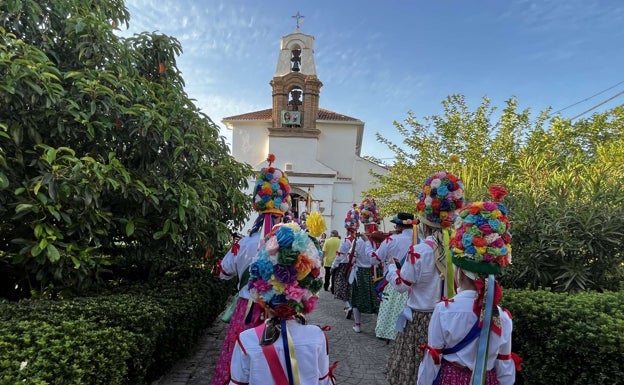Nothing to envy Madrid: the Andalusian town that also celebrates San Isidro with dancing and flowers

In the heart of the Subbética region of Córdoba , bordering the provinces of Jaén and Granada, there is a town that celebrates the feast of San Isidro Labrador in a special way. The municipality of Fuente-Tójar organizes a Royal Fair around May 15th, the day of its patron saint. This fair lasts four days and always coincides with a weekend.
Throughout these popular days, the memory of the past is kept alive with processions, traditional dances , musical events, and more, all filled with joy. And if we had to list a series of concepts, we would say that history, archaeological sites, olive groves, oil, lime, hidden corners, alleys, gypsy girls and geraniums, nature, and dancers sum up the idiosyncrasy of this town.
During the Royal Fair, the program is very extensive, although one of its distinguishing features is a group of people, called the Dancers of San Isidro Labrador, who dance before the Saint in his procession—which begins around eight in the evening—whose role is unique and fundamental.
 Moment of the Dancers heading to the temple
aytofuentetojar
Moment of the Dancers heading to the temple
aytofuentetojar
Eight people, eight men specifically led by the " Maestro ," who is the essential figure of the dance, lead the rest of the dancers with their tambourine playing. Significantly, there is no document or writing that refers to the origin of the dance, although some studies suggest it dates back to around 1500 or 1700. Everything indicates that it began paganly, and when the Saint was named the patron saint of Fuente-Tójar, the dance was included in this religious festival.
The dance is performed eight different times. The dancers make their debut in the church and the remaining times they perform during the procession of the patron saint. During the procession, they walk in front of the image. The dance begins when the image stops, and then the dancers stand in two lines of four facing the other four.
The steps are distinctive, but their attire is even more so. Most wear a striking tiara-shaped hat on their heads, covered with paper flowers from which hang five silk ribbons of different colors . Another style is for the dancers who play the guitar and violin, who wear a black felt hat laced with flowers.
They all wear white shirts with lace and a sash that crosses from the right shoulder to the left side. They also wear white petticoats and a skirt of bright solid colors, short black trousers that reach the knee, open with silver buttons and a tasseled cord that hangs from the petticoat below. Their legs are covered with cotton stockings, and their feet are covered with white espadrilles.
Her dance is considered a jewel of folklore and won the First National Prize for Ancient Dances in Madrid in 1963.
ABC.es




